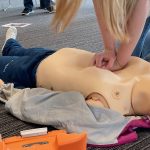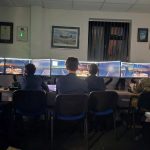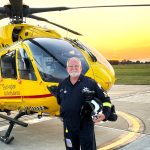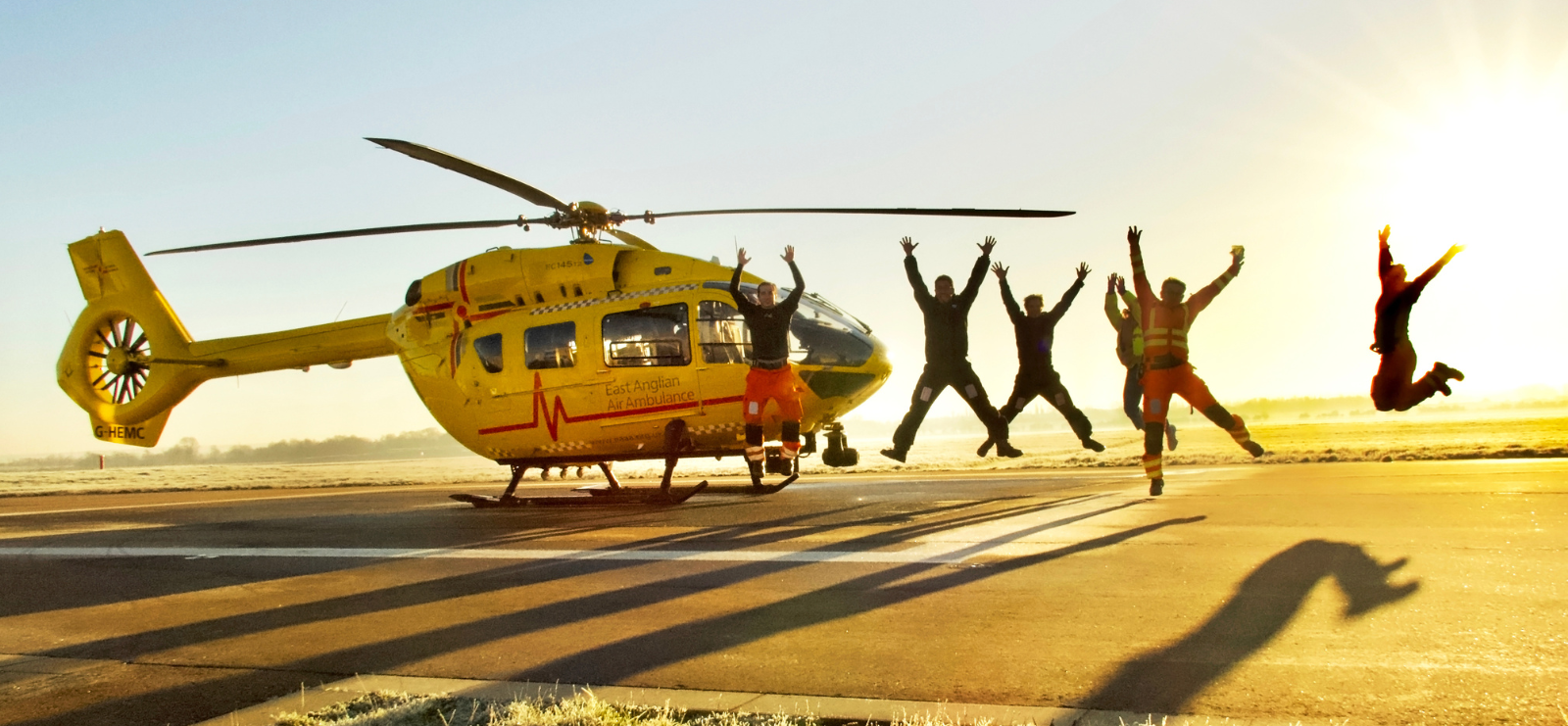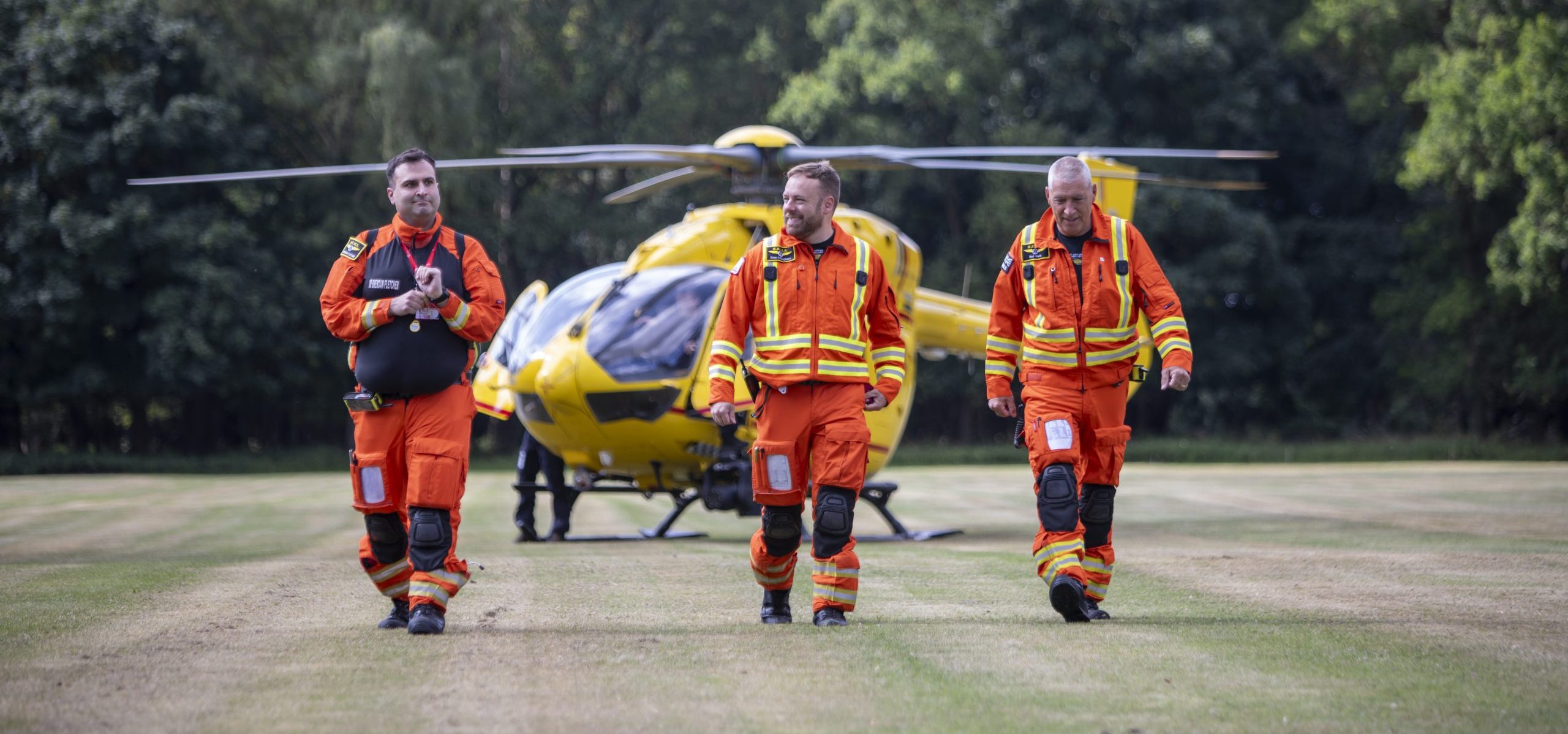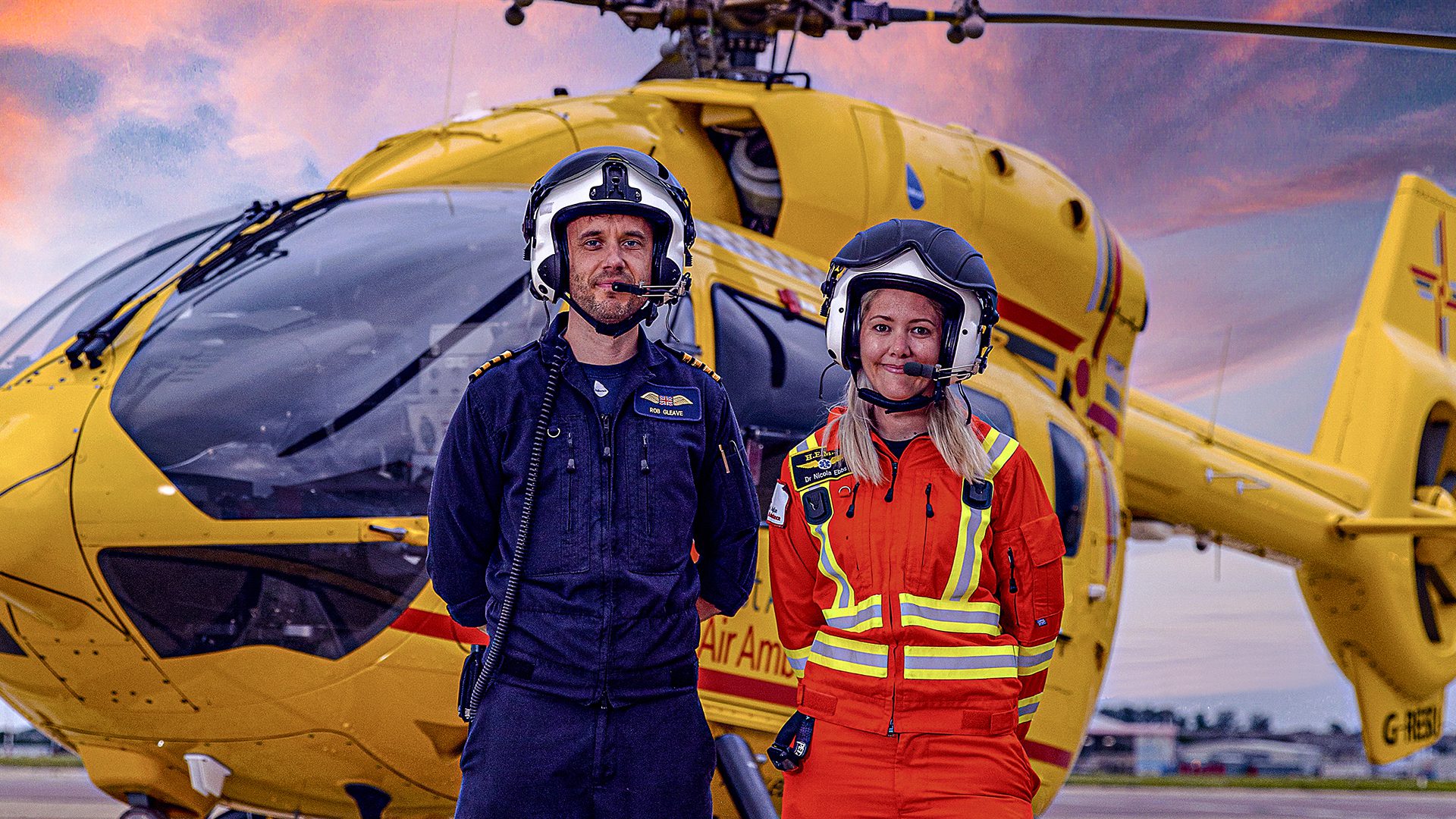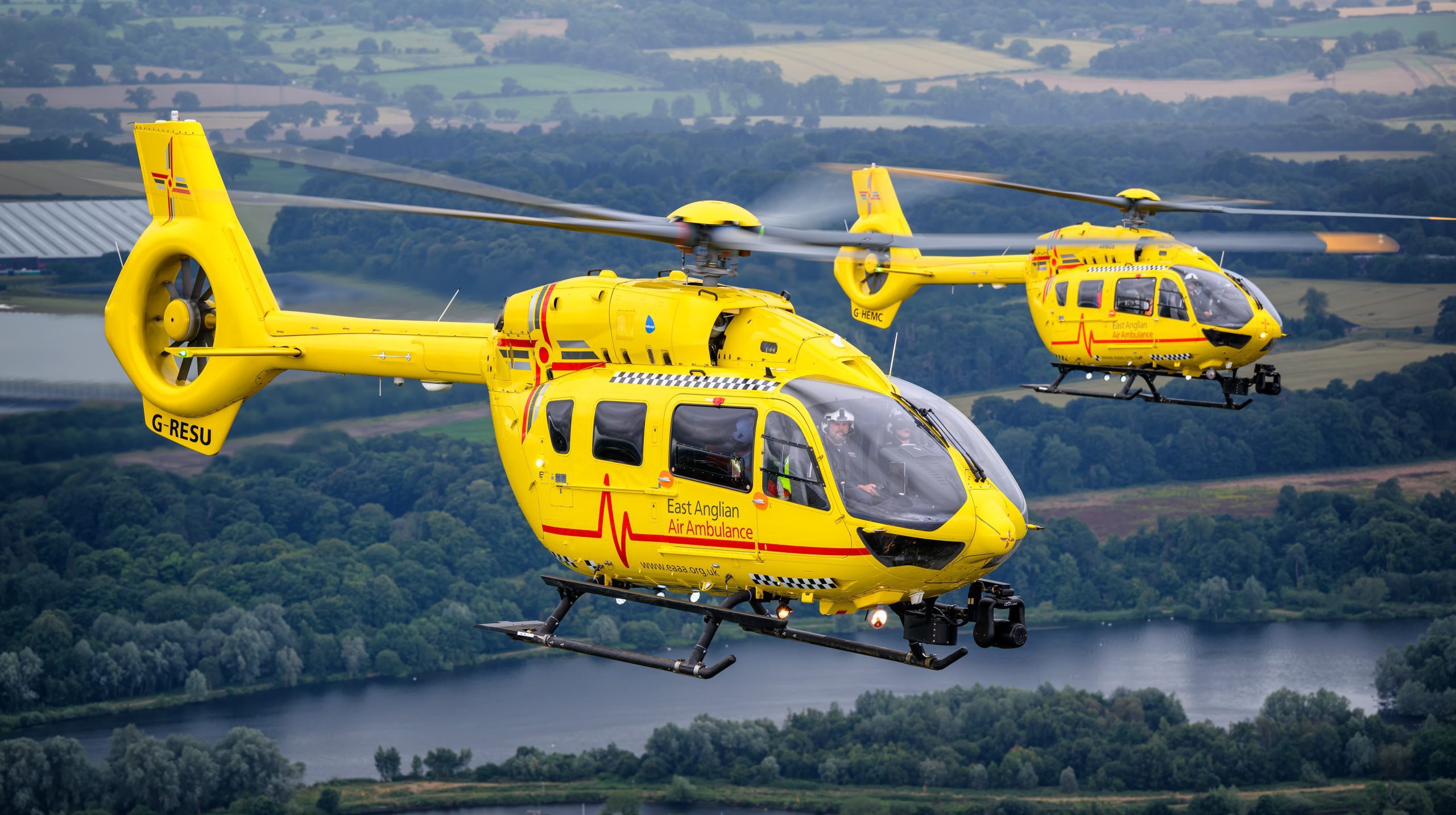17 Jun 2025
Marking Captain Martin’s 7,000 career flying hours
Captain Martin, pilot with EAAA’s aviation partner, Babcock International Group (Babcock), has reached the impressive milestone of 7,000 career flying hours. Many of these hours have been flying Helicopter Emergency Medical Service (HEMS) missions with EAAA during his seven years with the charity. To mark Captain Martin’s achievement, we spoke with him to hear more about his aviation career and what this moment means to him.
What inspired you to be a pilot?
I really just wanted some adventure as a younger man. At university, a friend left before me and qualified as a helicopter engineer in the Royal Navy, and he planted the seed of what became a near 20-year career as a helicopter pilot.
How did you start your career?
I joined the Royal Navy in 1992 as a helicopter pilot. In the military you learn to fly on a small, fixed wing aeroplane before learning to fly helicopters. I still remember the first time I flew in a helicopter and my instructor demonstrated how to hover. It was an amazing experience and gave me a great sense of freedom. I remember having a grin from ear to ear and I fell in love with flying helicopters.
How did your career develop and lead you to HEMS?
My military career gave me all the requisite tools for flying HEMS. Lots of low-level flying by day and night using night vision goggles. Landing in a variety of unusual locations away from an airfield and having to figure out how best to land. Also flying Search and Rescue missions. After leaving the Royal Navy, I flew for the Police for a year before flying offshore helicopters. This broadened my experience, particularly flying in poor weather and in clouds with sole reference to the aircraft flight instruments.
By the time I joined EAAA as a HEMS Captain in 2018 I felt that all of my previous jobs had prepared me well. Flying HEMS for EAAA involves all the disciplines of helicopter aviation, from low-level flying, night flying using night vision goggles, to instrument flying in cloud.
What is your role at EAAA and what does this involve?
I am a HEMS Captain, which means I am responsible for the safe operation of the helicopter and its occupants. To fulfil this responsibility, I ensure all operational procedures and checklists are complied with, in accordance with the Operations Manual. In addition, I ensure the weather and aircraft performance is suitable to safely complete a tasking. In an emergency situation, I take appropriate action to ensure the immediate safety of the helicopter, its occupants, whilst minimising the risk to any third-party people on the ground.
All of this is done as part of a multi-pilot crew, which means the co-pilot assists in the safe and efficient conduct of the flight. Ultimately, in the event of me becoming incapacitated, the co-pilot will assume command.
In addition to my flying duties, I am the EAAA Chief Pilot. In this capacity, I am the line manager for all the EAAA pilots. I also work closely with the EAAA Operations team to ensure the safe and effective delivery of this vital HEMS service in East Anglia.
How do you record your flying hours?
My flying hours are recorded from the moment the helicopter’s rotor blades start turning until the moment the helicopter lands and the rotor blades have stopped. The flying hours are recorded electronically by the company. I also have a personal flying logbook, which is where I record my flying hours.
What does the achievement of 7,000 hours mean to you?
To put it into context, HEMS pilots fly around 200 hours a year, on average. Unlike flying airlines where many hours are accrued flying in a straight line from A to B. Helicopter legs are much shorter and involve much more ‘hands on’ flying. 7,000 hours is the accumulation of a 30-year career flying helicopters.
What is your proudest moment flying HEMS missions?
It may be surprising to hear that it is not related to being in the cockpit! I think the proudest moment for me was when my children’s primary school invited me in to give a presentation to the children about my job. It made me realise just how much of a privilege it is to fly on behalf of EAAA.
Can you recall any memorable taskings or landing sites?
I think it has to be returning to EAAA’s Norwich base following a HEMS tasking on New Year’s Eve 2023. At the stroke of midnight, we saw the Norwich skyline light up and it was quite a sight from the cockpit!
In terms of a memorable landing site – landing on the roof of the Royal London Hospital in central London after flying a critically ill patient to the closest major trauma centre. It makes you realise just how big an area EAAA can cover.
What’s it like working as part of the HEMS team at EAAA?
It is simply a privilege working as part of the HEMS team, and truly humbling working with gifted clinicians whose sole aim is to care for the region’s most seriously unwell and injured people.
